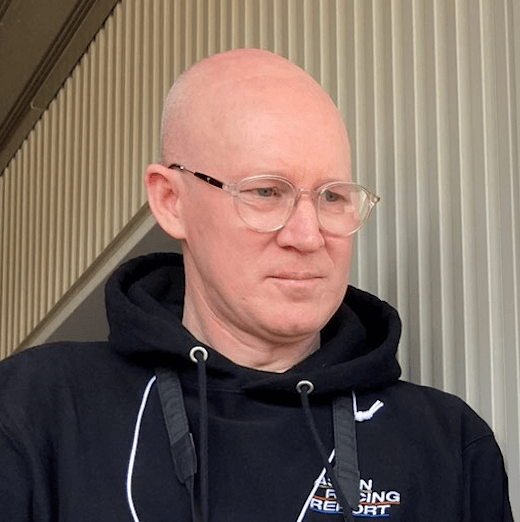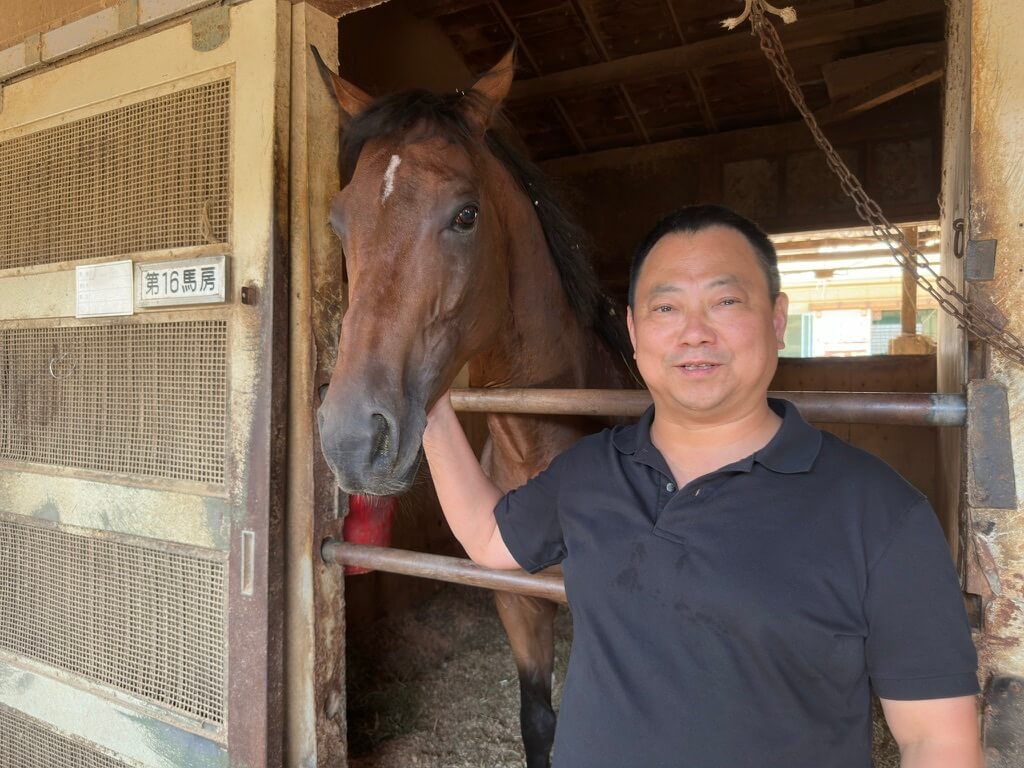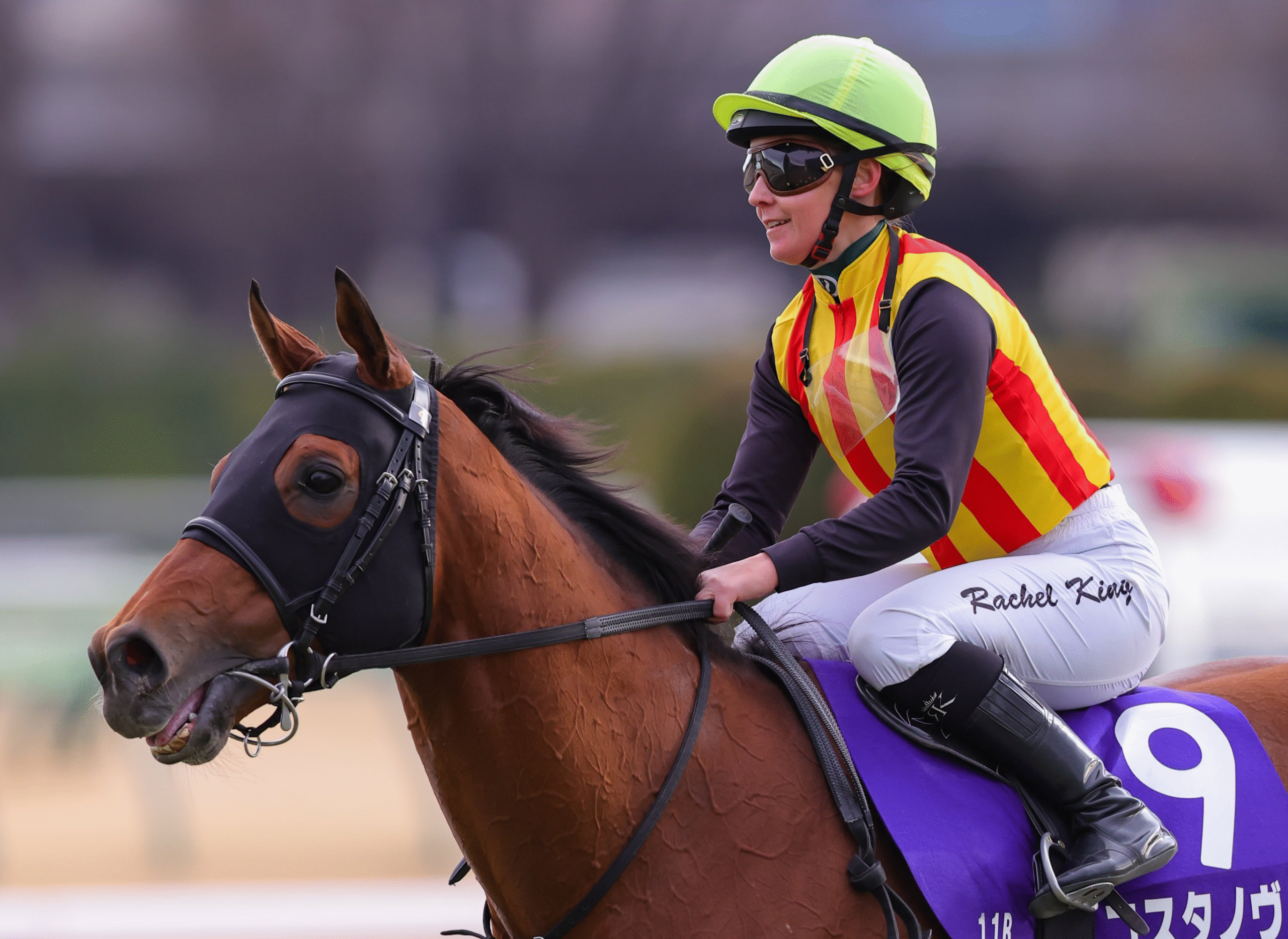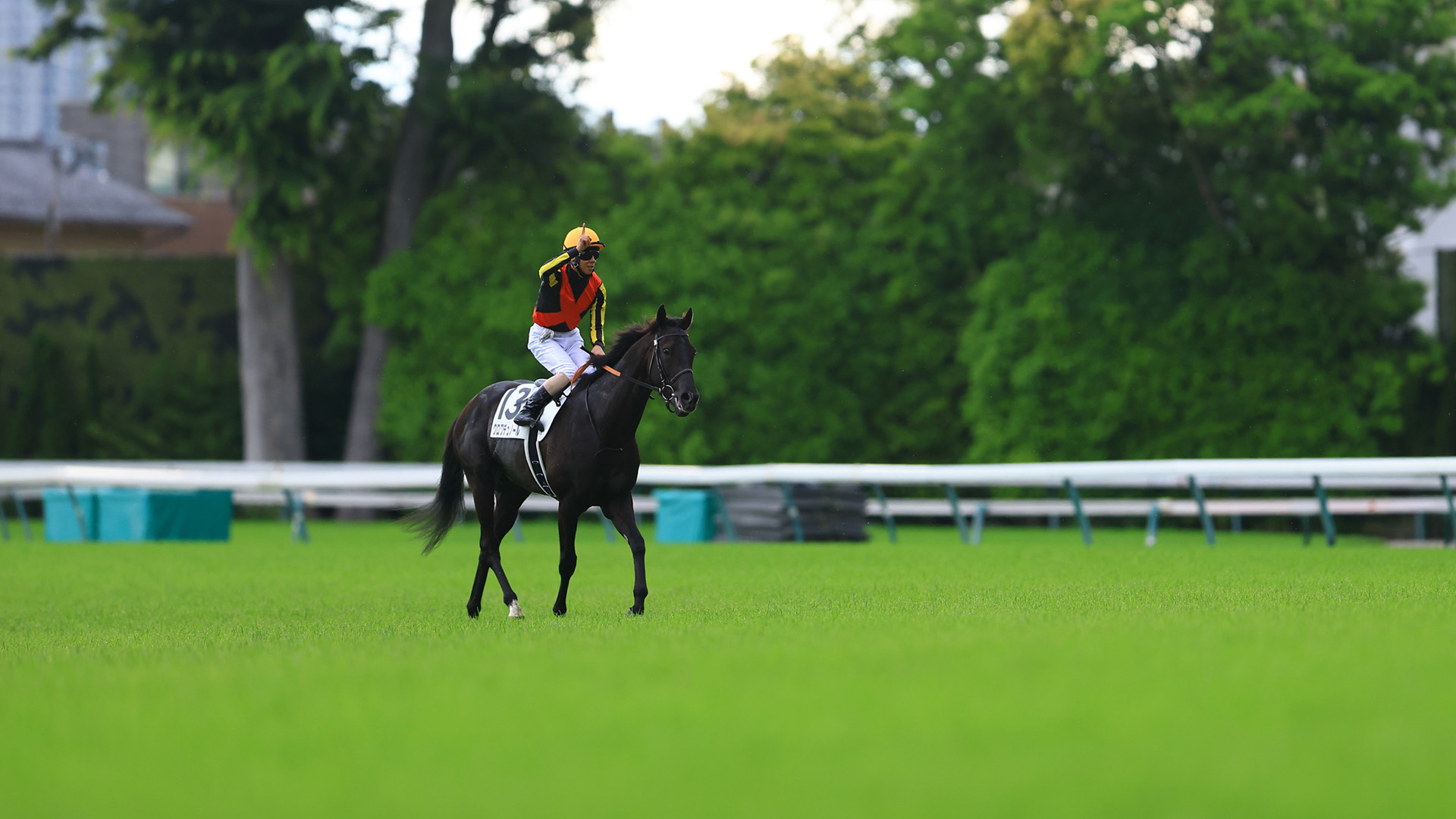Ikee And Son: Two Triple Crowns, Six Arima Kinens And A Lasting Legacy
Yasuo Ikee trained the peerless Deep Impact and Yasutoshi Ikee the mercurial Orfevre, each to Triple Crown glory, ‘Arc’ defeat, and Arima Kinen redemption.
THERE WAS a sense of awe – a hint of mythical wonderment, perhaps – when Yasutoshi Ikee spoke of Orfevre, that unpredictable enigma wrapped in a conundrum, locked within a powerful chestnut frame.
“Orfevre didn’t feel like a horse,” Ikee said. “He was so intelligent, as if there was a human inside him. In the Chinese story Journey to the West, there is a horse who is transformed into a horse from a ‘dragon’ prince. He was just like that, a human transformed into a horse.”
Memories of Orfevre’s madcap antics in the March 2012 G2 Hanshin Daishoten came to mind as Ikee spoke. First-up for the year after his Triple Crown and first Arima Kinen heroics, Orfevre decided he didn’t want to play. He led until the half-mile mark under Kenichi Ikezoe then said ‘enough’, turned his head and was suddenly a detached last; then off he galloped again, rounding the field to press the lead in the home run, only to fail by half a length.
Orfevre’s most infamous defeat, his first second-placing in the G1 Prix de l’Arc de Triomphe in Paris, had traces of that peculiar mind too: a surging run under Christophe Soumillon and then the drift – Orfevre’s thoughts distracted perhaps or maybe it was all intentional – as defeat came from what had seemed a certain victory.
“He had a good memory and he really hated to be ruled by a human,” Ikee said.
The trainer spoke to Idol Horse at Sha Tin racecourse, two days before his top miler Soul Rush placed second in the G1 Hong Kong Mile.
“Orfevre had a habit of stomping the ground a little bit when he was running, so his feet tended to get tired easily. Correcting that wasn’t easy,” he continued. “Since he didn’t like to be ruled by a human, we had to find a rider who would not force him to do things, but treat him as a friend.”

Deep Impact was a different character and type to Orfevre, but he was also a rare kind of champion, the rarest, in fact. Ikee was already training under his own licence when his father, Yasuo Ikee, took charge of the compact bay colt. Yasuo’s words about his all-time great were also coated with awe, but the emphasis was not on the mythical with this storied legend of the turf, rather the deep, reverential respect he had for a horse known around the world as Japan’s greatest.
“Deep Impact was rather small and didn’t look outstanding but he was a healthy horse,” Ikee senior said rather plainly, but then his old eyes ignited as he stood up from his seat in the Sha Tin breakfast lounge to share his memories.
“He had great spirit as a racehorse and he produced great offspring as a stallion: this was a type of horse I had never seen before, so in this aspect, I think he was the greatest horse I have ever seen in my life.”
Both horses turned heads beyond the Japan Racing Association (JRA) during their careers. They stand out as two of the most dominant Arima Kinen winners in that race’s impressive history, and each won Japan’s Triple Crown, a remarkable feat on its own, but more so given the familial link between the trainers.

Yasutoshi paused for a moment and asked if a father and son had each won a Triple Crown anywhere else in the world? Well, if we’re talking about the two most important Triple Crowns historically, then it’s a no on the English front, and a maybe yes, maybe no when it comes to the United States.
You see, Ben Jones and his son Jimmy kind of achieved it when the great Citation won the U.S. Triple Crown in 1948, Ben having already nailed the Triple Crown in 1941 with Whirlaway. Jimmy switched the licence for Citation to Ben for the Kentucky Derby, to give his dad a record-equalling four wins (he would extend that to six in time), even though Jimmy was the de facto trainer and was on the racecard again for the Preakness and the Belmont.
Yasuo, 83, and Yasutoshi, 55, are well-known for their Triple Crown successes but they owe their places in horse racing lore to a middle school gymnastics teacher who was so taken with young Yasuo’s agility and small stature that he encouraged him to try to become a jockey at nearby Kyoto racecourse. He had never sat on a horse but took the advice and enjoyed a 20-year career as a solid middle-tier rider before turning to training, back in the days when jockeys were attached to racetracks rather than the two JRA training centres of Ritto and Miho, as they are now.
His career formed connections that link the generations and still last to this day, notably with Japan’s greatest jockey Yutaka Take, who rode Deep Impact in all 14 of his races for 12 wins.
“We had a similar family setting,” Yasuo said. “Yutaka’s father (Kunihiko) was a jockey (at Kyoto), I was a jockey there, and Yasutoshi and Yutaka were the same age and went to the same school. They both wanted to become a jockey, so they went to the horse-riding facility together. However, Yasutoshi gave up his dream because he became too big, but Yutaka went on to become a jockey so Yasutoshi said, ‘I will become a trainer and let Yutaka ride my horses.’ And the dream came true.”
Yasutoshi noted that he and Take have known each other since they were babies and that he played a little part in nudging Take along the route to becoming a living legend on Japan’s racing scene.
“I actually invited Yutaka to the horse-riding club. Before that, he was playing baseball,” he said with a dose of humour.
The Sha Tin setting was fitting for such recollections. It was there, after all, that Take rode Yasuo’s Shadai-owned Stay Gold to victory in the 2001 Hong Kong Vase, when Yasutoshi was assistant.
“Stay Gold couldn’t win a Group One in Japan after multiple tries, and at that time in Japan there was the absolute champion T M Opera O,” Yasutoshi recalled. “I felt even if he continued to run in Japan that autumn, it would be hard for him to win a Group One. Also, it was already decided he would retire at the end of the year and I felt it would be very sad if the horse could not go to the breeding shed as a stallion.
“The Hong Kong Vase seemed like a better chance for him to win, and actually I made this suggestion to my father, asking if we could run him there. So, the moment when he won that race … it’s a great feeling that cannot be expressed in words.”

Yasutoshi’s successful career – 864 wins including 22 Group 1 victories – owes much to his father’s example and guidance from an early age.
“I took him to my stables at the racecourse for fun,” Yasuo related. “I believe he was three or four years old at that time. I remember he really wanted to ride a horse, so I let him ride. He watched me do my job, and he began to feel like he wanted to do this as well. Then he became a trainer. He loved horses since he was a kid, so this was great for him.”
But Yasutoshi also credited much to the things he learned from the recently retired British champion trainer Sir Michael Stoute, and the U.S.-based Englishman Neil Drysdale, both of whose stables he spent time in to expand his experience, all the while watching, listening and learning.
“My training is based on Sir Michael’s method, so when I’m preparing for the races or the horse’s condition is not well, I would imagine what kind of decision he would make,” Yasutoshi explained.
“Neil Drysdale was originally from Britain and he was close to Sir Michael Stoute. He adopted the British training style in the U.S. and found success there. I wanted to become a trainer in Japan and adapt the British methods in Japan, so I learned a lot from Neil.
“Sir Michael once told me, ‘Find the detail.’ He asked me to pay attention to details such as horses’ feet, muscles, facial expressions, emotions. That’s what he meant. And these words are my motto.”
Those words, Yasutoshi agreed, came in very useful when dealing with Orfevre’s unique character.
Orfevre’s very existence is hooked into his father’s achievements as a trainer, and particularly Stay Gold’s final outing at Sha Tin that nailed the required Group 1 win that ensured his place Breeders Stallion Station. Failure that day would likely have seen him retired to a field at the horse park, not the breeding shed.
Stay Gold is Orfevre’s sire. Not only that, Orfevre’s dam Oriental Art was a daughter of Mejiro McQueen, the horse Yasuo trained and Take rode to win the G1 Kikuka Sho, two editions of the G1 Tenno Sho (Spring), and the G1 Takarazuka Kinen, as well as placing second in the 1991 Arima Kinen.

The Arima Kinen is a mighty race, the biggest and best in Japan: fan-voted participation, a huge crowd, weighty history, impressive honour roll, and, at the heart of it, spine-tingling sport.
Yasuo, now an owner and long-since retired as a JRA trainer, won the Arima Kinen twice, firstly with Mejiro Durren in 1987, then 19 years later with Deep Impact.
Yasutoshi, still in his prime years, has won the race four times: Dream Journey came first in 2009, then Orfevre’s pair in 2011 and 2013, and Satono Diamond took the prize in 2016.
Deep Impact’s 2006 Arima Kinen was a wonder of seemingly effortless athletic locomotion: he advanced from a rearward position with 800m to race, swept into a higher gear off the home turn and quickened brilliantly beyond his rivals to coast past the winning post under Yutaka Take, three lengths clear of the next best, Pop Rock.
That came after his deflating failure when third in the Arc at Longchamp (later disqualified for traces of a prohibited substance), and provided stunning redemption at his final start.

It was a similar story with Orfevre in 2013. His demoralising second Arc defeat, behind Treve in Paris, shattered his fans and is often talked about, but the bounce back, his Arima Kinen finale, is the one that should be forefront in the memory. It was something wondrous to behold.
The five-year-old was settled back in the field, but rounding the home turn he motored past his rivals under a hold, Ikezoe seemingly no more than a passenger; Orfevre had the lead upon straightening and charged away from his rivals to win by eight lengths, easing down.
Like Deep Impact seven years earlier, the champion had cemented his legacy as a true great.
The careers of both horses added weight to the reputations of their trainers and ensured the names Ikee, Yasuo and Yasutoshi, will be known long into the future ∎




